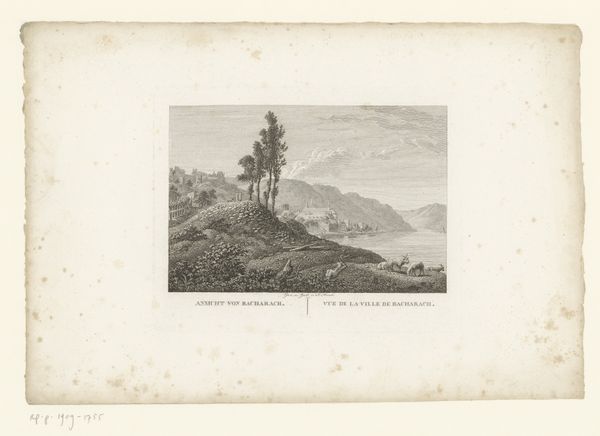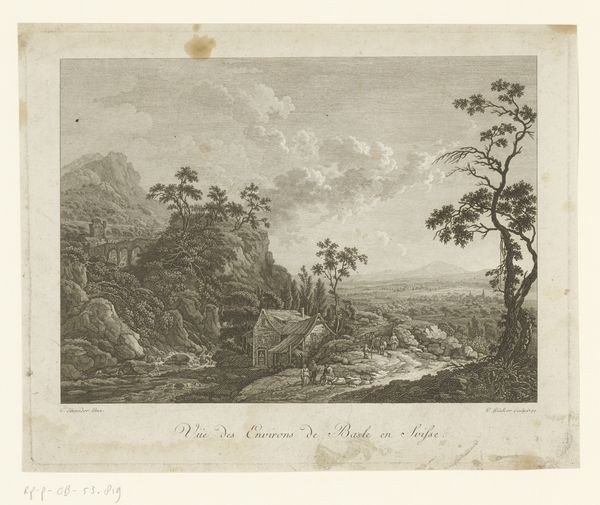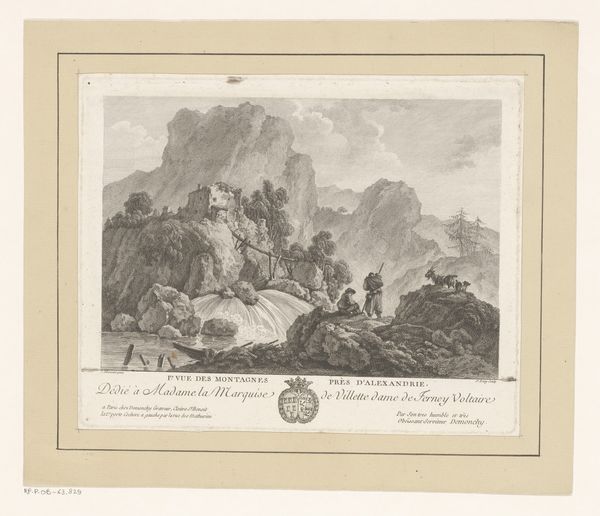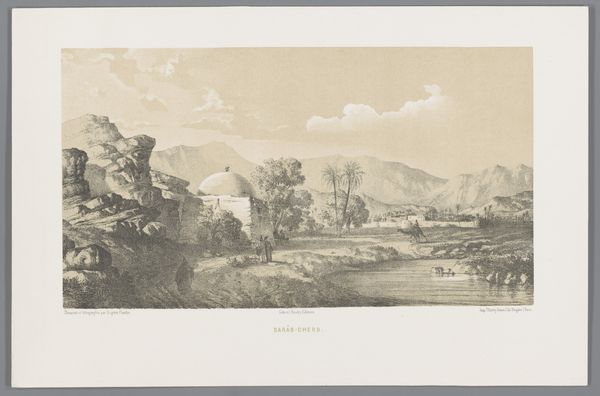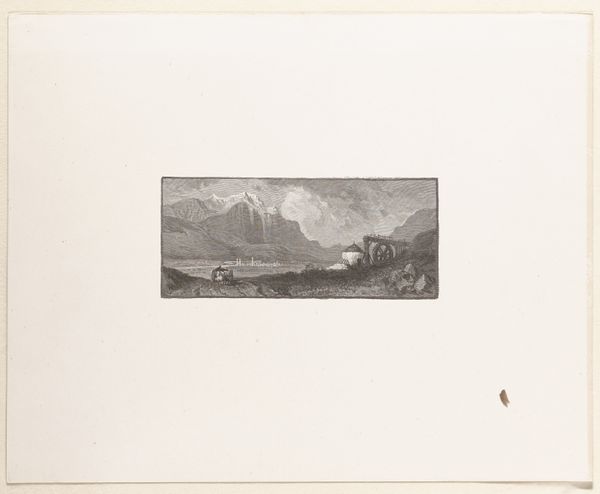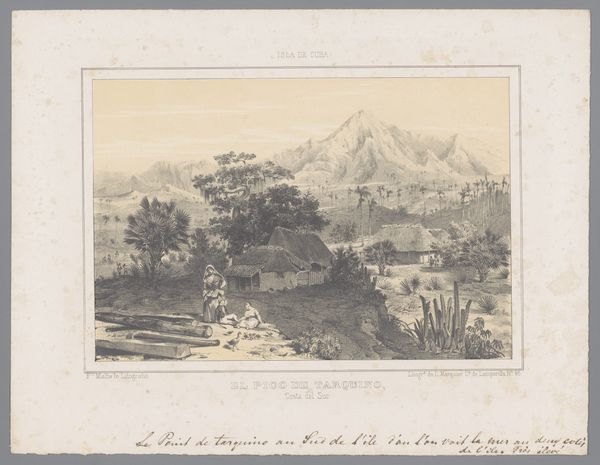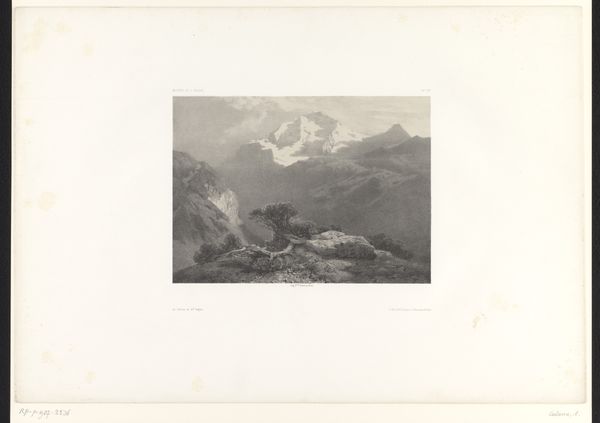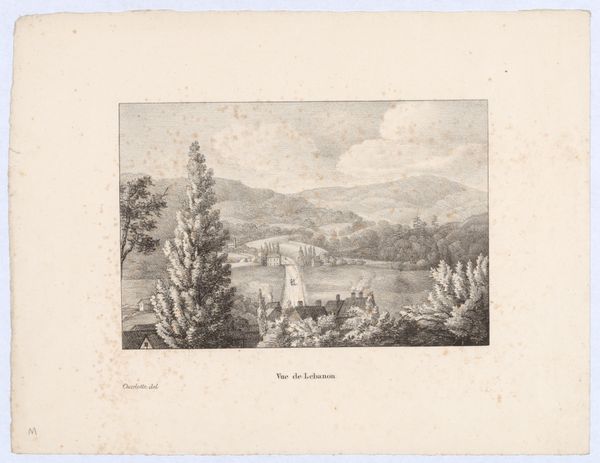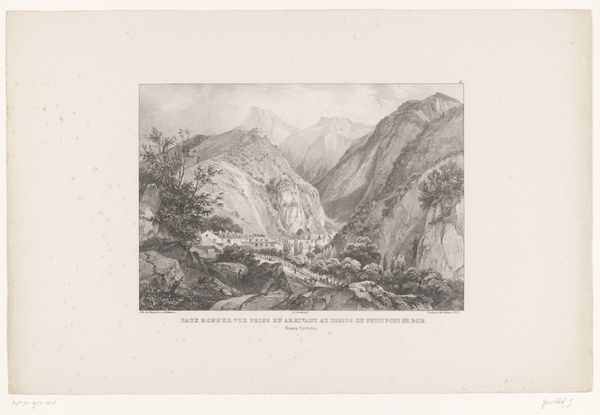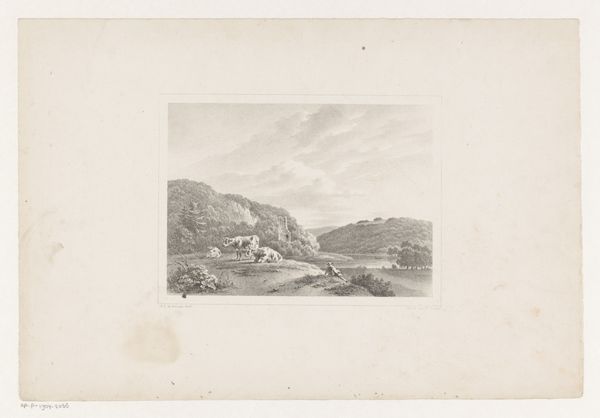
drawing, print, etching, engraving
#
drawing
# print
#
etching
#
old engraving style
#
landscape
#
classical-realism
#
nude colour palette
#
cityscape
#
engraving
Dimensions: height 222 mm, width 309 mm
Copyright: Rijks Museum: Open Domain
Curator: This is "Gezicht op de Etna vanuit Taormina," or "View of Mount Etna from Taormina," an etching and engraving created before 1899 by A. Fesca. What are your initial thoughts? Editor: It's starkly beautiful, almost haunting. The contrast between the light sky and the dark, sharply defined landscape gives it an almost gothic feel. A reminder of the power and the indifference of nature, right? Curator: Indifference is a good word, and fits with the time. Think about the rise of industrialization during the late 19th century and this inherent understanding of the environment and the world; you have to see a print like this in context to appreciate the nuances. Editor: Exactly. The detailed depiction of the Sicilian landscape—the volcano dominating the background, the city nestled in the hills—all hints at that emerging shift in perception, doesn't it? The sublime as a reminder of human insignificance. Curator: Indeed. The artist isn't just presenting a scenic view; there’s a sense of humans dwarfed by something greater. Landscapes like this played a crucial role in constructing national identity, especially in the context of the Grand Tour. Editor: How so? Curator: Well, consider the cultural elite who traveled to places like Italy to witness such sites, imbuing themselves with history, culture, and a certain understanding of the world. Prints like these allowed that experience to be disseminated much more widely. But also, the printmaking as a technique becomes a cultural vector in itself. Editor: So it's about access—democratizing the elite experience but also controlling the narrative, no? Shaping perceptions of the Italian landscape, history, even its people. The inclusion of those tiny figures in the foreground walking the road highlights that contrast between the sublime and everyday life. They’re just existing within this massive landscape, and it underlines a whole class of disenfranchised bodies. Curator: Precisely, and that dynamic is integral to how we understand these images today. Editor: This isn’t just a pretty picture, it's a cultural artifact loaded with meaning and power. It leaves me considering whose story really gets told. Curator: It makes you consider its historical impact, how these images reinforced certain viewpoints while perhaps silencing others, yes? A reminder that our gaze is always framed by context and history. Editor: A crucial point that ensures we look at art with eyes wide open, and with an active desire for greater intersectional approaches and understandings.
Comments
No comments
Be the first to comment and join the conversation on the ultimate creative platform.

